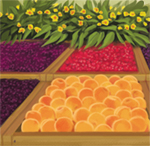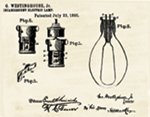Here’s a look at the research we did for the individual exhibit cards in World’s…
Game Submissions: Top 10 Things I Look For (Part 2)
The next 4 questions I ask when considering a game for publication relate to costs, potential profits, and how excited I am to spend time on it.
—
I spend a good amount of my time as a publisher looking at game submissions from game designers. You’ll often hear people in the industry speak of publishers “signing” a game or “licensing” a game. The contract between a game designer and a game publisher is often a licensing contract, much like the contract between a book author and a book publisher. In a licensing contract, the designer grants the publisher the rights to use their intellectual property (the game design) in a product in exchange for a royalty of some kind on each copy they sell.
I have identified the top 10 questions I ask myself when I consider whether or not I want to license a game that a designer pitches us for publication. I covered the first 3 questions I ask in my post last week (Part 1):
- Does it fit our brand?
- What is the mechanical hook?
- Is it fun (to me, as it is)?
In this post, I look at the next 4 questions. (It’s worth noting that the process isn’t strictly linear, so I’ll sometimes be able to make a decision based on some of these questions even before I receive a prototype.)
—
4. How much will people pay for it?
 The fourth and fifth questions go hand in hand, looking at potential profit on each game. Eventually I will give money to a manufacturer to make copies of the game, and I will then ask people to give me money in exchange for one of those copies. It’s important that I understand how much money people would want to give me for it. You’ll often hear business people talk about this as “perceived value.”
The fourth and fifth questions go hand in hand, looking at potential profit on each game. Eventually I will give money to a manufacturer to make copies of the game, and I will then ask people to give me money in exchange for one of those copies. It’s important that I understand how much money people would want to give me for it. You’ll often hear business people talk about this as “perceived value.”
I play the prototypes with people and ask them what they would pay for it. People buy games at a lot of different places, so I try to ask specific questions: “What would you expect this to cost on Amazon? In a game store? On Kickstarter?” I study other games in the market with similar components, complexity, length, and depth. While evaluating a game, I have a decent idea of a range: “This game is the kind of game for which people would pay around $40-$50 (MSRP).”
—
5. What will it cost me to manufacture?
 It’s also important to understand how much money it will cost me to manufacture the game. I have worked with manufacturers for quotes for quite a few games now, and I’m starting to get an idea looking at a game what the range of prices might be. I often get a high-level quote from a manufacturer or two while considering a game, just as a benchmark.
It’s also important to understand how much money it will cost me to manufacture the game. I have worked with manufacturers for quotes for quite a few games now, and I’m starting to get an idea looking at a game what the range of prices might be. I often get a high-level quote from a manufacturer or two while considering a game, just as a benchmark.
I can then see what my potential profit is for one copy of the game; you’ll often hear business people talk about this as “margin.” Perceived value to customers and components included could certainly change throughout the development process, moving the potential profit up and down somewhat. (It’s worth noting that sometimes increasing the cost of components can actually increase potential profit: even though it costs more to make, more expensive components can sometimes increase the perceived value even more.) This is the most common reason I have for declining a fun game submission: so many submissions are way too expensive to produce profitably.
—
6. Do I get excited by the thought of spending time working on it?
 Publishing a game is a lot of work. I have a full-time job beyond publishing board games, so I’m making time over nights and weekends and lunch breaks to playtest and develop games, direct artists, edit rulebooks, develop marketing content and convention plans, write tons of email (to manufacturers, playtesters, reviewers), and manage hundreds of tiny details. I have to be extremely excited about a game design to spend that much time beyond normal working hours to do all this. I have turned down good games with a lot of potential because they just didn’t excite me enough. I’ve been happy to see a few of those get published by other companies.
Publishing a game is a lot of work. I have a full-time job beyond publishing board games, so I’m making time over nights and weekends and lunch breaks to playtest and develop games, direct artists, edit rulebooks, develop marketing content and convention plans, write tons of email (to manufacturers, playtesters, reviewers), and manage hundreds of tiny details. I have to be extremely excited about a game design to spend that much time beyond normal working hours to do all this. I have turned down good games with a lot of potential because they just didn’t excite me enough. I’ve been happy to see a few of those get published by other companies.
—
7. How close are the game mechanisms to being complete?
 Most publishers will do extensive playtesting and make at least some changes to the game mechanisms. The closer they are to complete, the less development work I have to do in addition to all the regular publisher work. That doesn’t mean a game needs to be complete for me to license it; part of what I love about being a publisher is collaborating with designers to develop their games. But the amount of my time and effort I think the game mechanisms need is a factor in my decision.
Most publishers will do extensive playtesting and make at least some changes to the game mechanisms. The closer they are to complete, the less development work I have to do in addition to all the regular publisher work. That doesn’t mean a game needs to be complete for me to license it; part of what I love about being a publisher is collaborating with designers to develop their games. But the amount of my time and effort I think the game mechanisms need is a factor in my decision.
I have signed three games so far, each appearing to be at different places. (One felt like a solid core with a couple significant missing pieces, one felt like it was nearly done, and one felt like a really cool idea that needed a redesign. I have personally enjoyed working on all three games.) There have been a small number of game submissions that I was really excited about but that needed a bit more development work than I was willing to give them. I gave those designers detailed notes and feedback, and I hope one day to receive a newer version of one or two of them to reconsider.
—
Some of these questions are a bit subjective. Different publishers will have different levels of excitement for different games, and publishers will have different gut instincts about the amount of development work left to do. Even the profit questions can be somewhat subjective: different publishers may feel that people will pay different amounts for the game, and the potential profit that publishers find acceptable varies from publisher to publisher. (How you plan to sell the games, how many you think you can sell, and your personal goals for your company matter a lot here. I have a full-time job, and I do not currently use money from my game company to pay for my living expenses. That no doubt has an effect on what games I decide to publish.)
Most game submissions get an unfavorable answer to at least one of these questions, and I decline them. But when a game submission looks like it will have an acceptable margin and I’m really excited about working on it, then I look seriously at the last 3 questions. I’ll cover those in the next post. Continue to Part 3 →
* Illustrations by Beth Sobel from our upcoming game World’s Fair 1893: Westinghouse Lightbulb Patent, Swiss Watches, Street In Cairo, and Olden Fruit Farm.
This Post Has 6 Comments
Comments are closed.


Hey, Randy. I appreciate you articulating these thought processes. Very helpful things to keep in mind as a designer.
I was checking out foxtrotgames.com, and I’m only seeing Lanterns and Relic Expeditions. Do you have any other titles we could investigate, or some sort of “what we’re looking for” in terms of your “brand”? I’d be curious to know if any of my current or future designs might be something that fits Foxtrot.
Thanks, Randy!
Thanks for the question! Our third game, World’s Fair 1893, just funded on Kickstarter and will be released next spring/summer. (I’m working to get the site updated with more information about that.) We also have a Submissions page in the About section that goes into more detail about what we’re looking for:
* https://foxtrotgames.com/submissions/
Randy, it’s great to hear your perspective on publishing. I’m looking forward to your next three points of consideration and really curious to see if you’ll happen to mention one point in particular. Until then… I’m sure you have many plates to spin!
[…] I spend a good amount of my time as a publisher looking at game submissions. I have identified the top 10 questions I ask myself when I consider whether or not I want to license them for publication. I covered the first 7 questions in my two previous posts (Part 1 and Part 2): […]
[…] ← Previous […]
[…] ← Previous Next → […]